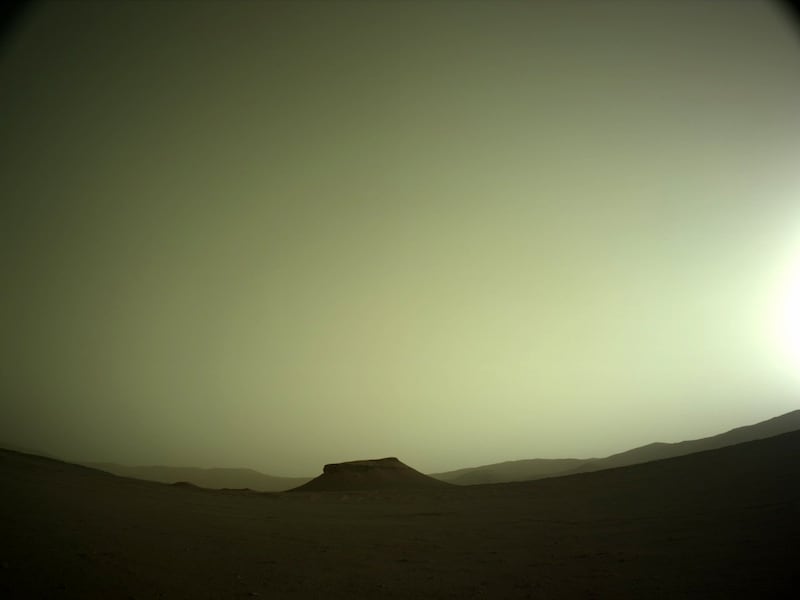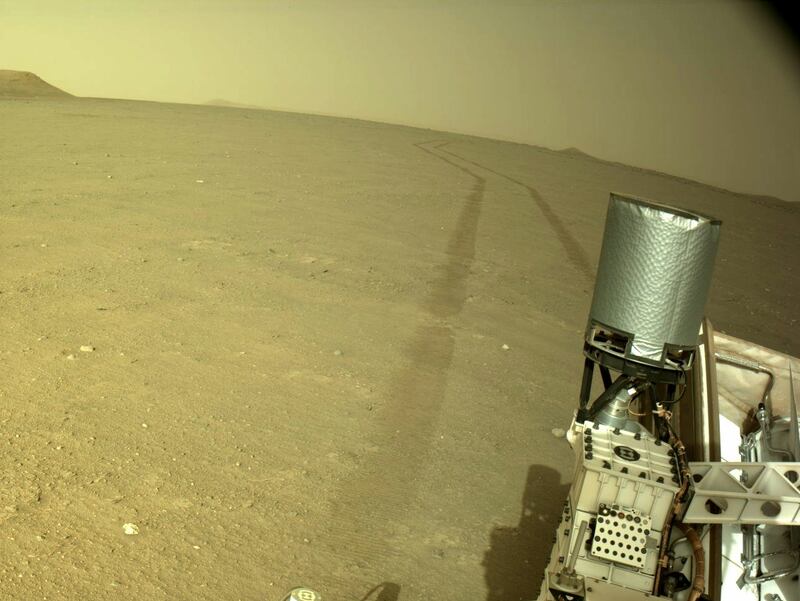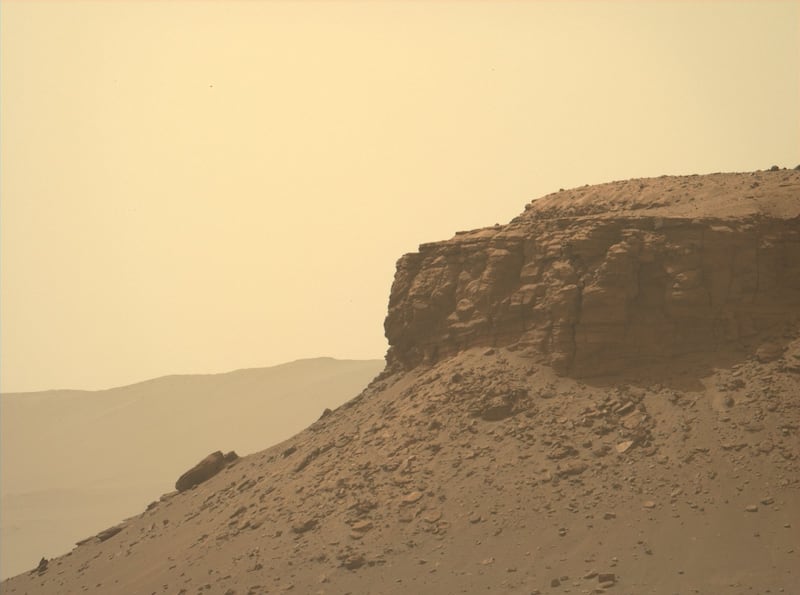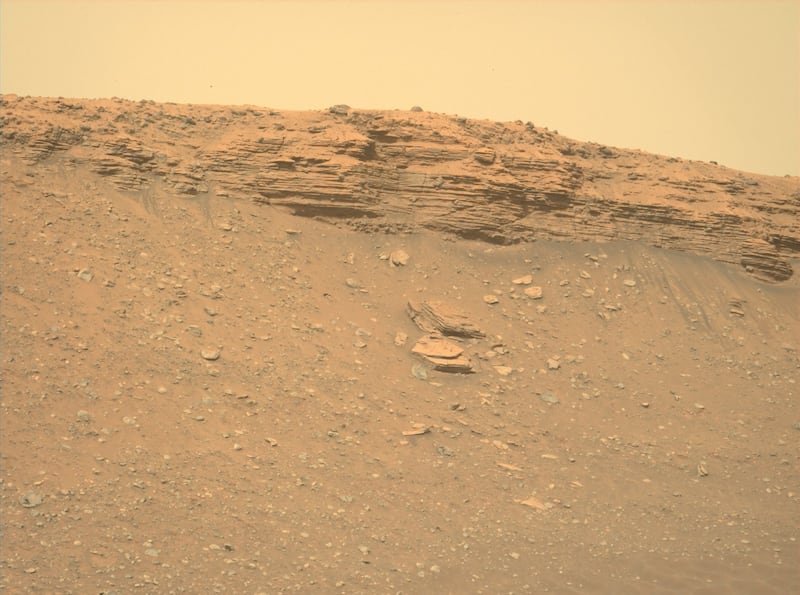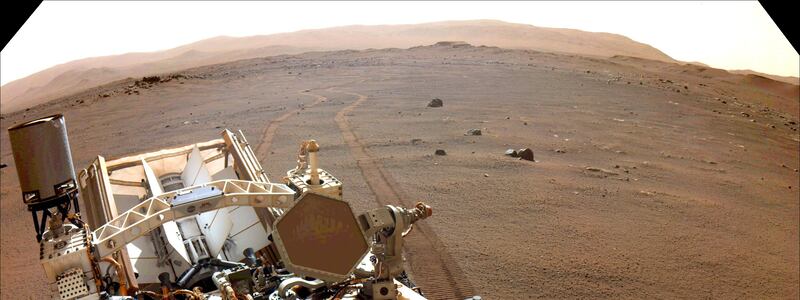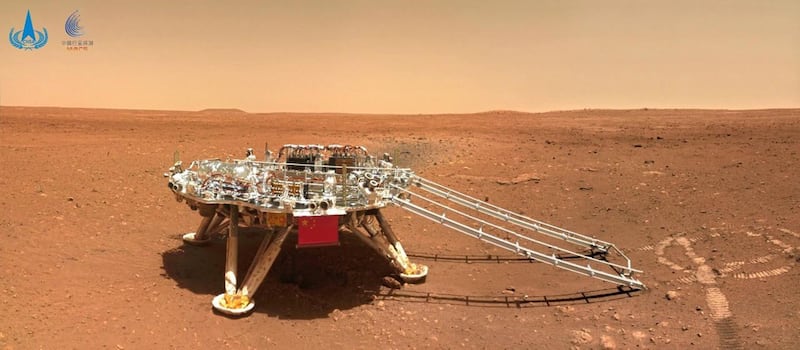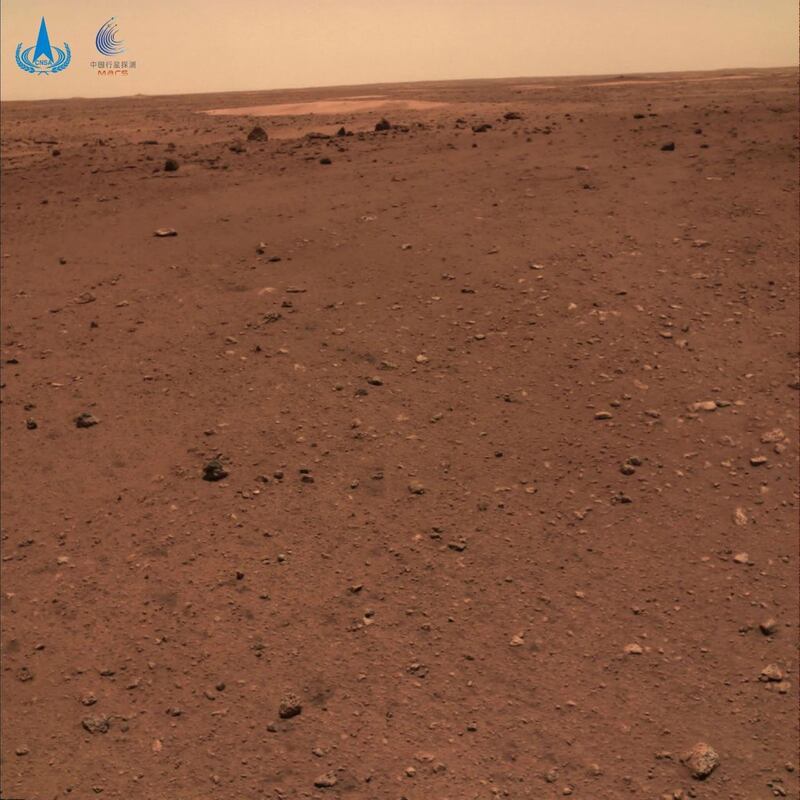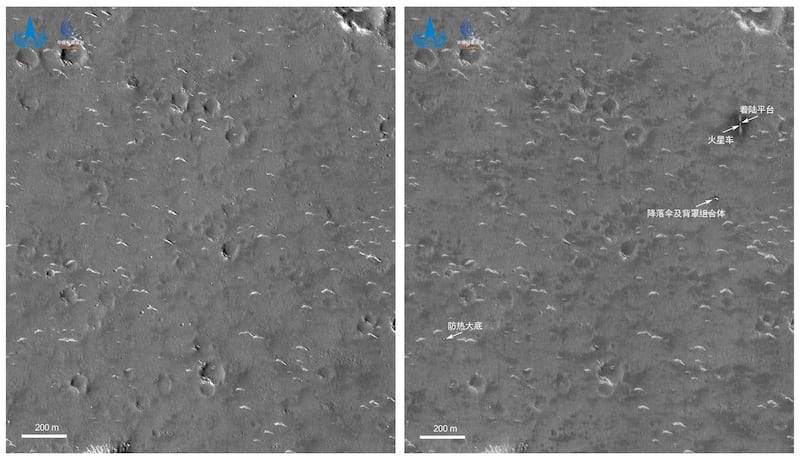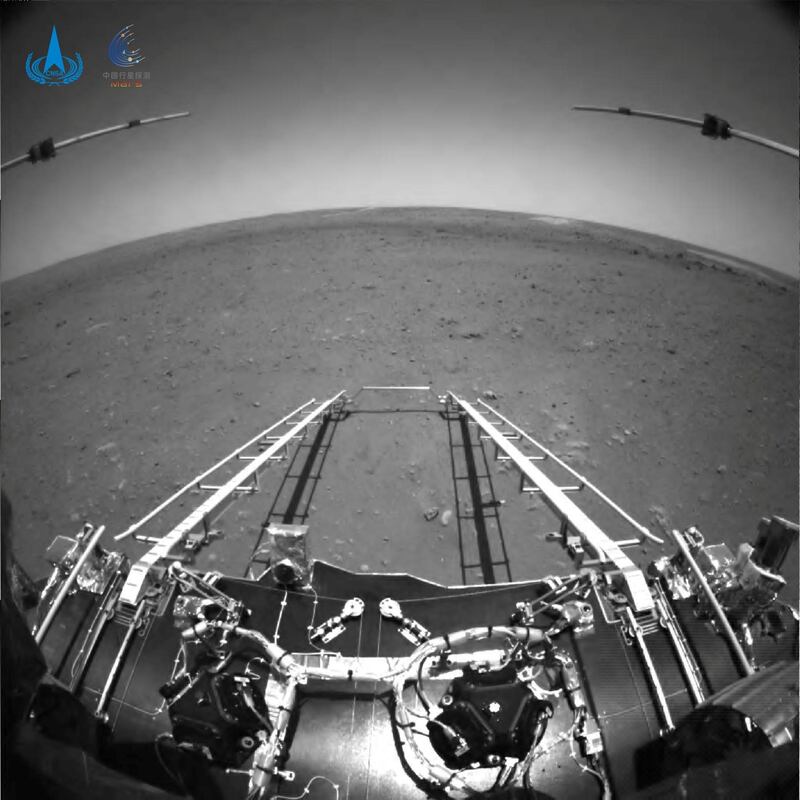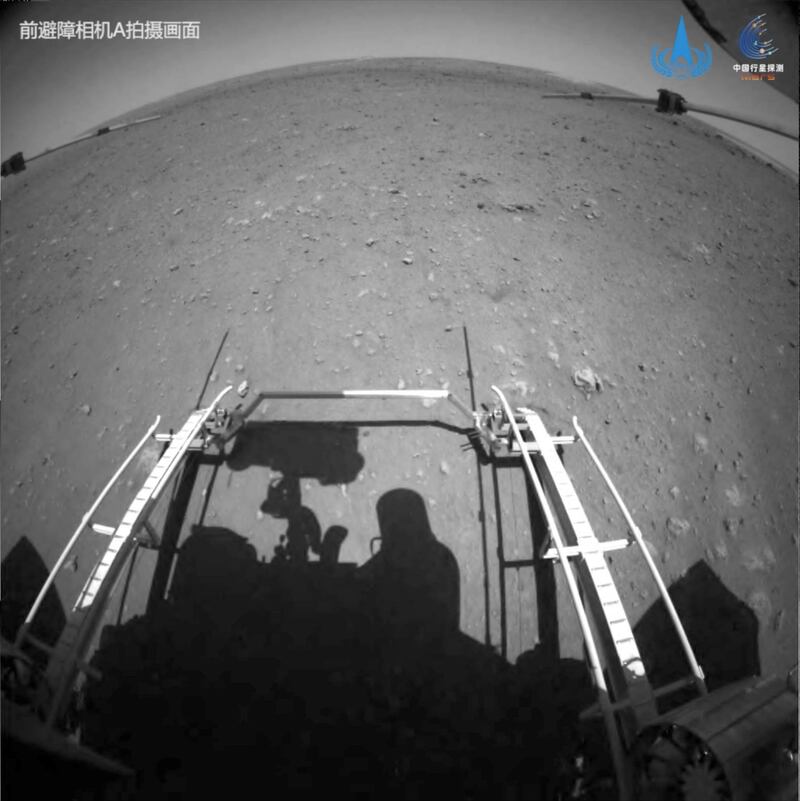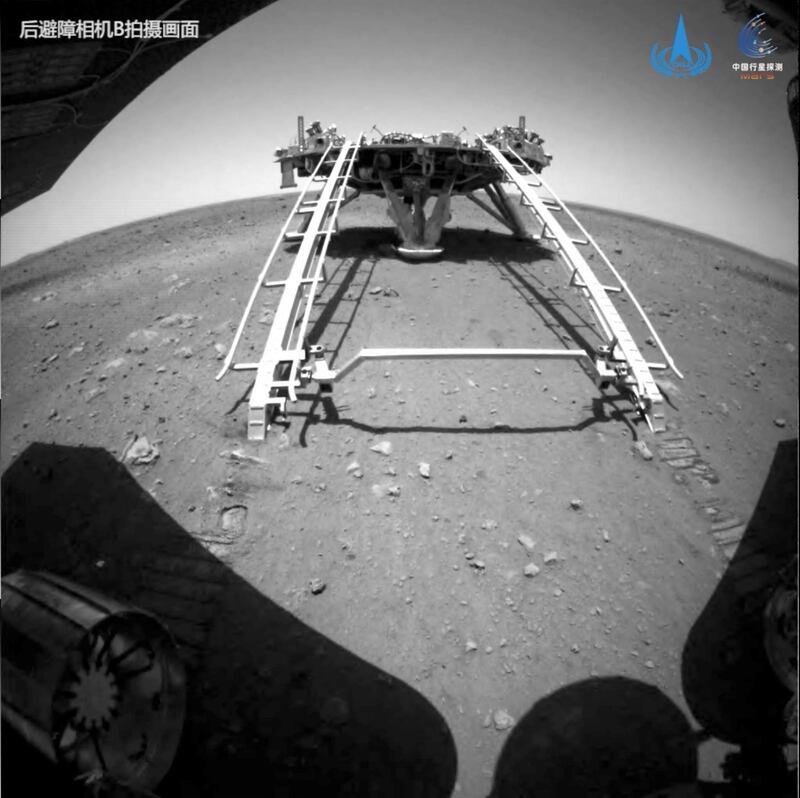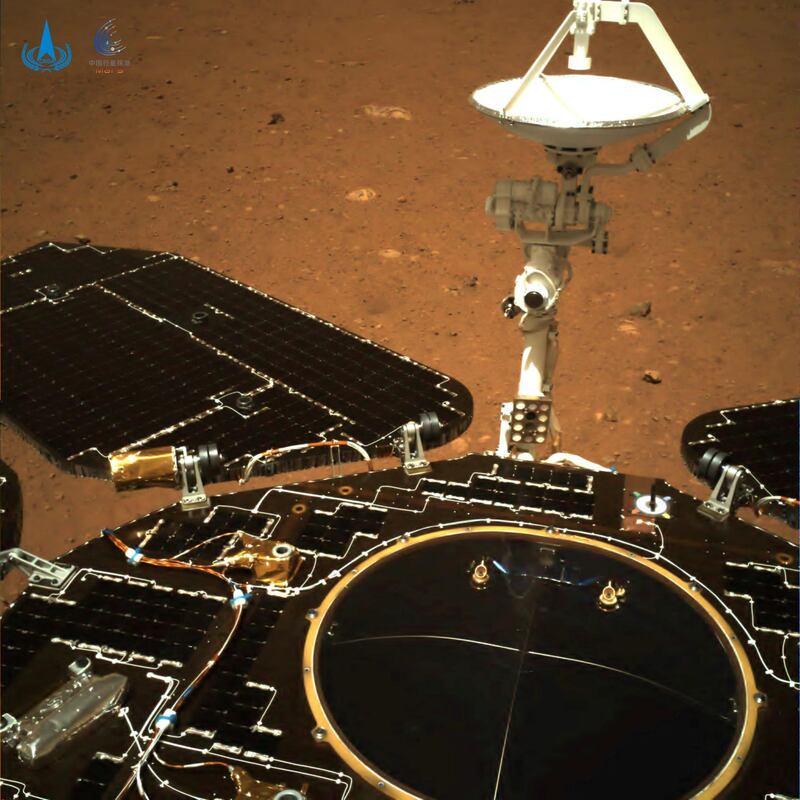Nasa’s Perseverance rover is to start searching for signs of ancient life at a river delta on Mars.
The car-sized rover arrived at the Jezero Crater’s river delta on April 13, a site scientists believe may contain signs of microbial life.
Since landing on the Red Planet more than a year ago, the rover has been collecting rock samples and beaming back to Earth high-resolution images of the Martian landscape, as well as recording what the planet sounds like.
Now, it will begin one of the most important parts of the mission – collecting rock samples at the crater, which will eventually be brought back to Earth through joint efforts by Nasa and the European Space Agency.
“The delta at Jezero Crater promises to be a veritable geologic feast and one of the best locations on Mars to look for signs of past microscopic life,” said Thomas Zurbuchen, associate administrator of Nasa’s Science Mission Directorate.
“The answers are out there – and Team Perseverance is ready to find them.”
The delta is an enormous fan-shaped collection of rocks and sediment at the western edge of Jezero Crater, formed at the convergence of a Martian river and a crater lake that existed billions of years ago.
Perseverance was sent to Mars to explore the delta because its fine-grained sediment could hold preserved remnants of ancient microbial life.
As part of the Delta Front Campaign, the rover will drive to the south-west and then the west of the crater for about a week.
The excursion is meant to help assess the best route to climb up to the delta, which rises about 40 metres above the crater floor.
Scientists will perform detailed science investigations during the rover’s journey, including taking rock core samples.
The rover is expected to collect about eight samples over about half an Earth year during the campaign.
Experience a 360-degree image from Nasa's Mars Perseverance rover
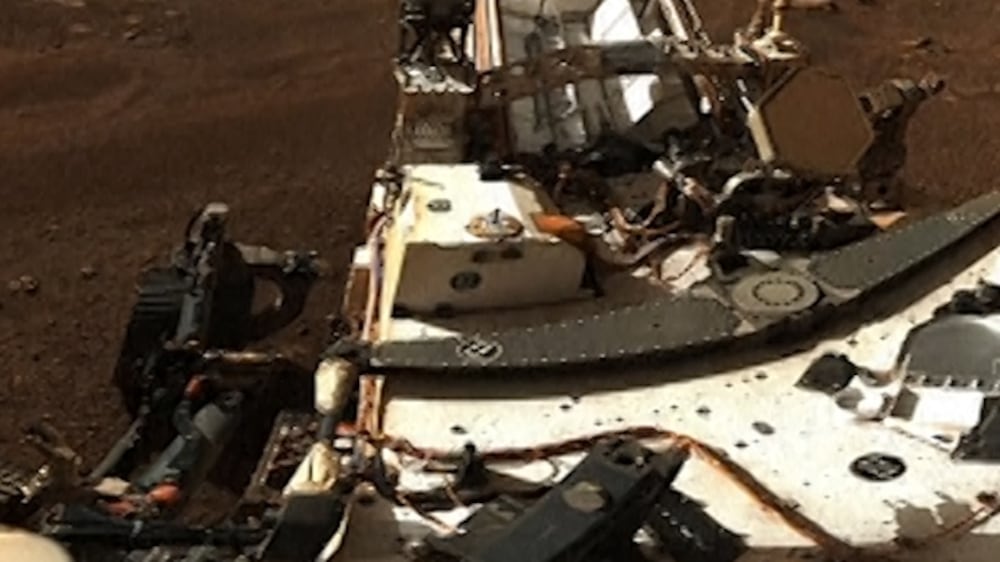
Ken Farley, Perseverance project scientist at Caltech in Pasadena, said they had been eyeing the delta for about a year.
“The delta is why Perseverance was sent to Jezero Crater; it has so many interesting features,” Mr Farley said, in a release issued by Nasa.
“We will look for signs of ancient life in the rocks at the base of the delta, rocks that we think were once mud on the bottom of Lake Jezero.
“Higher up the delta, we can look at sand and rock fragments that came from upstream, perhaps from miles away.
“These are locations the rover will never visit. We can take advantage of an ancient Martian river that brought the planet’s geological secrets to us.”
The mission is meant to help characterise the planet’s geology and past climate. Space officials hope it will pave the way for human exploration of the planet, and be the first mission to collect Martian rock and dust.
Future missions by Nasa and the European Space Agency will involve sending spacecraft to Mars to collect these sealed samples and return them to Earth for analysis.
Perseverance has a lifespan of about 14 to 15 years, but its working life depends on factors such as surviving fierce dust storms on Mars.
The Opportunity rover, for example, was active for 14 years. Nasa lost contact with it in 2018 because of a dust storm


